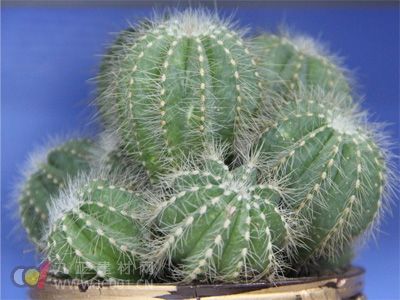Prickly pear maintenance skills
Prickly pears, also known as cacti, are incredibly easy to grow and maintain. They thrive in hot and dry conditions, making them a top choice for home gardeners. These plants are not only visually appealing and clean but also require minimal care in terms of pest control and leaf pruning. With proper attention, they grow quickly and produce vibrant, beautiful flowers. If you're interested in growing prickly pears, here's a detailed guide on how to cultivate them successfully. There are eight key factors to consider when cultivating prickly pears. If you follow these steps carefully, your plants will flourish. These include temperature, light, potting soil, planting, repotting, watering, fertilizing, and pest control. First, temperature is crucial. Prickly pears prefer warm and dry environments. During winter, the daytime temperature should be kept above 20°C, while nighttime temperatures should not drop below 10°C. If the temperature is too low, it can lead to root rot, which is a common problem among beginners. Second, light is essential for healthy growth. Prickly pears need plenty of sunlight, but during the summer months, they should be protected from direct glare. If you're growing them indoors, using artificial lights can help them grow stronger and more robust. Third, the potting soil must be well-draining and have good aeration. A mix of loam, humus soil, and coarse sand works well. You can also add some limestone gravel or crushed bricks to improve drainage. When planting, make sure to place a layer of broken pottery at the bottom of the pot to ensure proper water flow and prevent waterlogging. Fourth, planting should be done in early spring. Choose a pot that’s just large enough to accommodate the plant with a little extra space. Using a pot that’s too big can cause the soil to stay wet for too long, leading to root rot. Some varieties, like straight-rooted types or larger balls, may require deeper pots, while smaller ones can thrive in standard containers. Fifth, repotting is important for maintaining healthy growth. When repotting, trim any old or damaged roots and let the plant dry for 4–5 days before replanting. The roots should be level with the soil surface. Avoid watering immediately after repotting—just mist the plant 2–3 times a day. After about two weeks, you can start watering lightly, and by the end of the month, new roots should begin to form. Sixth, watering needs vary depending on the season. During the summer, when the plant is actively growing, it requires more frequent watering. Water early in the morning or late in the evening when temperatures are cooler. Avoid watering during the hottest part of the day, as this can burn the plant. In rainy seasons, reduce watering to prevent overwatering. Be especially careful not to pour water into the top of sunken cactus balls, as this can cause rot. During winter, when the plant goes dormant, watering should be reduced significantly. Keep the soil slightly moist but avoid overwatering. The colder it gets, the drier the soil should be. Larger mature plants are more drought-tolerant than younger ones. Water on sunny mornings during winter, and as temperatures rise, gradually increase the frequency and amount of watering. Seventh, fertilization is important during the growing season. Use a diluted, fully decomposed liquid fertilizer every 10–15 days. However, once autumn arrives, reduce the amount of fertilizer. Stop fertilizing by the first week of October to prevent soft, weak growth that can be vulnerable to cold damage. When applying fertilizer, be careful not to get it on the plant itself. If it does, rinse it off with water immediately. Eighth, pest and disease control is essential, especially in high humidity or poor ventilation. Fungal diseases can be treated with carbendazim or thiophanate, while insect infestations can be managed with leuca. Always spray these solutions outdoors to avoid damaging indoor plants or affecting air quality. Automatic Float Valve,Trunnion Ball Valve,Stellite Spraying Ball Valve,Double Block and Bleed Valves Yuyao Gaobao Sanitary Ware Factory , https://www.gurberry.com